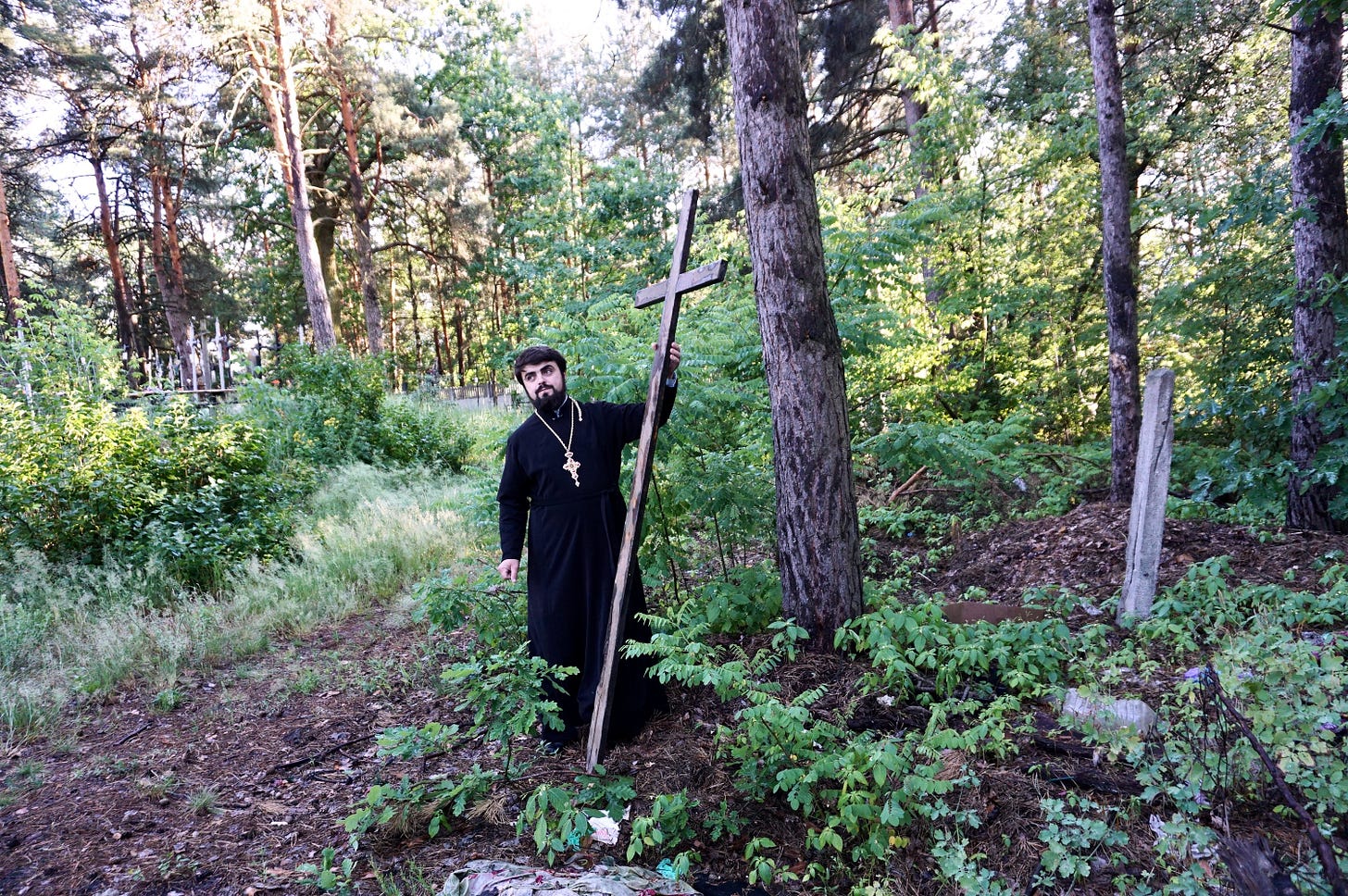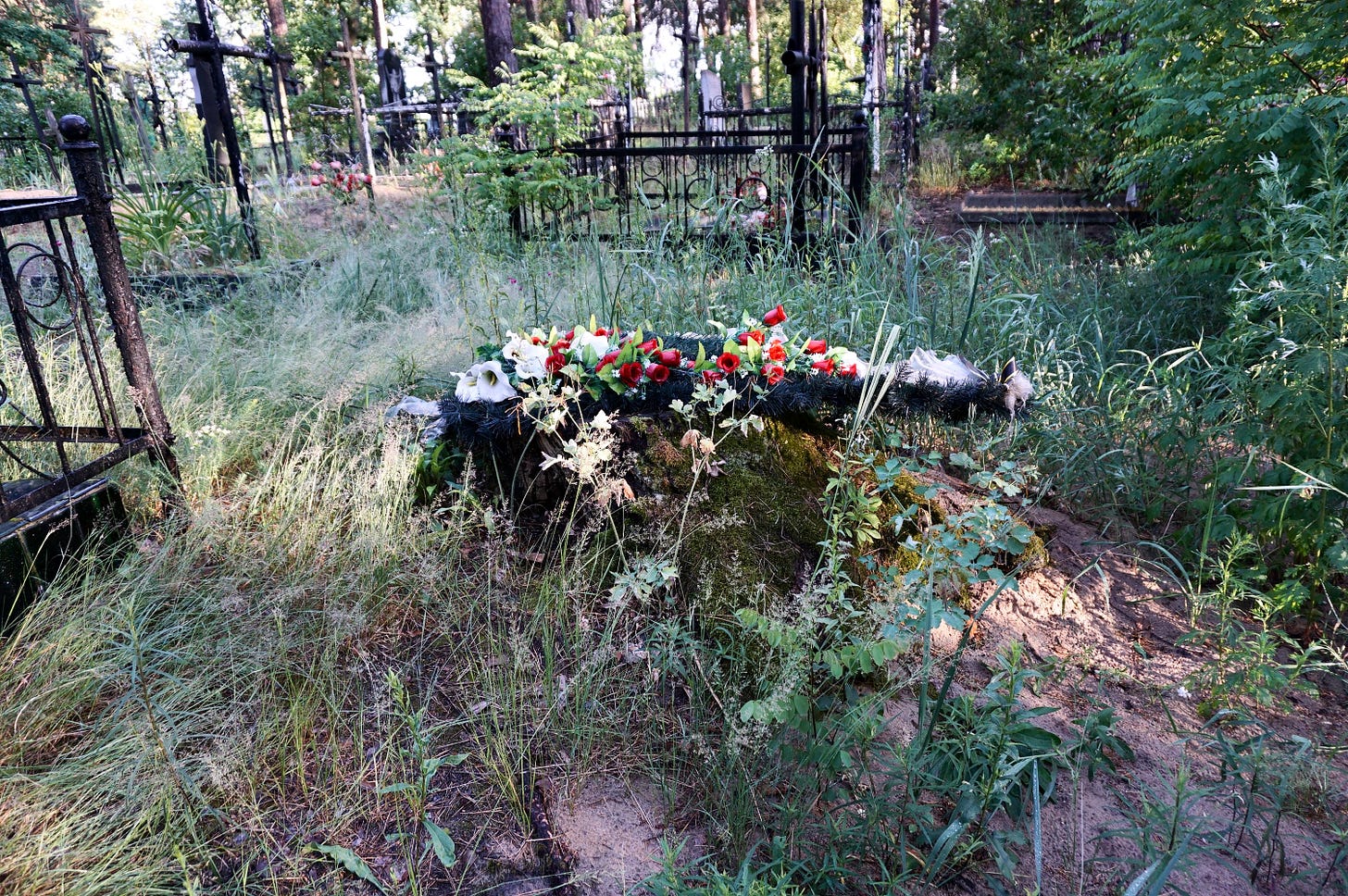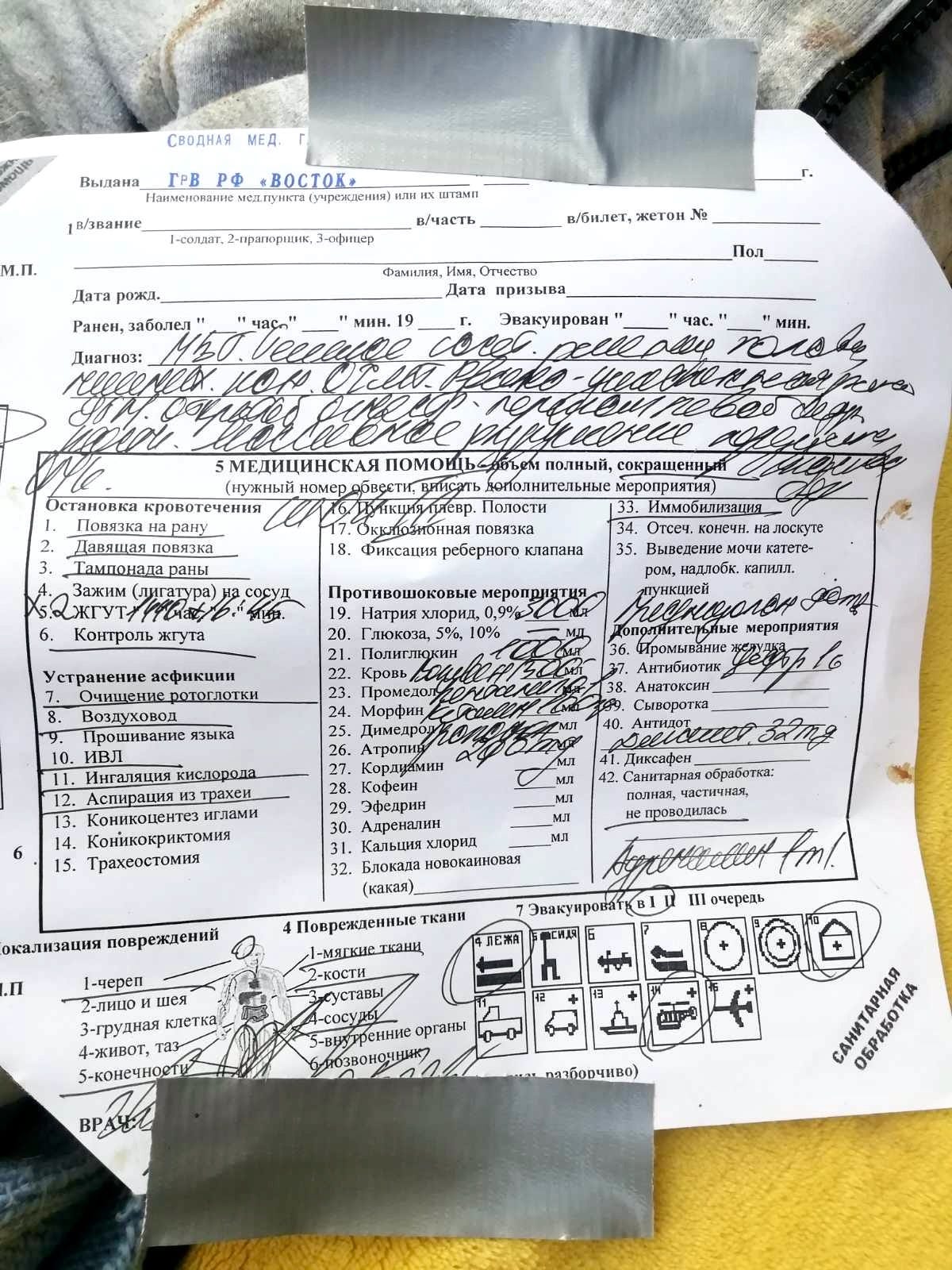The mystery of two dead women
Russians forced a priest to bury two ‘Ukrainians.’ Who were they really?
Journalism is too opaque and misunderstood. Chills gives a behind-the-scenes look at how dangerous investigative journalism gets made.
I followed the deep black outline of a rather small priest into the woods of a quiet village northwest of Kyiv, called Zdvyzhivka. The only light came from whatever streaks of sunlight were able to break through the dense trees. It was a dark place, physically, but also psychologically. We walked through a white-brick gate into a cemetery, one in which Russian soldiers had forced the town’s priest, Vasiliy Benca, to bury seven of his fellow Ukrainians.
Old iron crosses stabbed the ground, slowly oxidizing. On the cemetery’s outskirts, wooden crosses taller than most people were strewn on the forest floor. And, in one corner, a large patch of moss-covered sandy soil was marked with a kind of wreath: artificial calla lilies and red roses on a bed of blackened spruce needles.
Benca had buried two bodies at that spot — two Ukrainian women, the Russians told him. But Benca was suspicious: Why had the soldiers brought flowers to the gravesite, and why did they tell him that they had tried to save the women, but couldn’t?
Why are Russian soldiers trying to save Ukrainians? We’ve all seen that this is not the norm. Why are the Russians laying a wreath on the grave of their enemy?
“There are more questions raised than answers,” Benca said.
Exactly who were these women, and which side of this brutal war had they been on?
I was in Zdvyzhivka to follow up on a tip about a possible “torture house.” But this disturbed patch of earth and what Benca had told me stayed in my mind.
Why were these two women afforded dignities not given to other Ukrainians?
Read more about torture in Zdvyzhivka here.

When Benca was working to bury the women, he saw a piece of paper on each of them — they were a kind of medical card, stating the nature of the women’s mortal injuries and the treatments they’d received. And the forms? They were in Russian.
Benca took a photo of only one of the pages because the other, he decided, was too bloody. The form does not have a name or rank on it (unless it’s in the chicken scratch my translator was unable to decipher), but it does say that she was with the Vostok unit from eastern Russia. A photo I was given of Benca during their burial shows the van that transported the women — it has a “V” on it for “Vostok.” The paper also outlines the medical care one of the women received:
Medics bandaged and filled multiple wounds, including one to her head. They applied two tourniquets to her right leg, one at 2:40 p.m., the other at 4:45 p.m. She was given a lot of medicine and underwent many procedures, including a tracheotomy, blood transfusions, oxygen, sodium chloride, antibiotics and morphine as well as other heavy painkillers. The paper duct-taped to her body also says that she needed to be evacuated as soon as possible by helicopter.
Everyone I spoke to said the two women were Russian medics, although I’m not sure whether that’s in the chicken scratch.
The photo I have of this soldier after she was exhumed in a plain wood coffin is heartbreaking. She wears only a dainty baby-pink bra with a little black lace, sweatpants that have been cut away to reveal bloody bandages around her knee and calf, and black wool socks with reindeer on them. Her face is badly damaged, but I can tell from her body that she was young. Yet another life lost prematurely.
Here are a few thoughts as to why these women may have been buried in this Ukrainian cemetery. One is cynical: The Russian government apparently requires a body for a soldier’s family to receive compensation, so leaving bodies behind saves the government money. But this may be Ukrainian propaganda.
It’s entirely possible the Russians had no way to transport the women out in their rush to withdraw from the village. Or, my fixer surmised, it could be that the women were not supposed to be in Ukraine. In the early stages of the war, the Russians were not using conscripts. So perhaps her fellow soldiers were trying to cover up the fact that she was there at all.
When I was in Ukraine over the summer, I was told by the wife of a man who worked at Gostomel Airport (also known as Antonov Airport) in Kyiv Oblast that there was still a dead Russian at the base. He’d been there for months. There have been many reports of the Russian military abandoning their own dead by the hundreds, or even thousands.
It seems that in this case, in the woods of Zdvyzhivka, the women’s colleagues did what they could to honor their comrades, a kindness that certainly too many people — and their families — on both sides of this conflict are never given.







It must be unusual to bury some colleagues with flowers and proof of treatment, and leave others to rot at a military base - abandoned. It's unlikely we will ever know the real answer. Their loved ones will never know where they are, which might be the worst of it.
Are you 100% sure the Ukrainians are the bad guys?